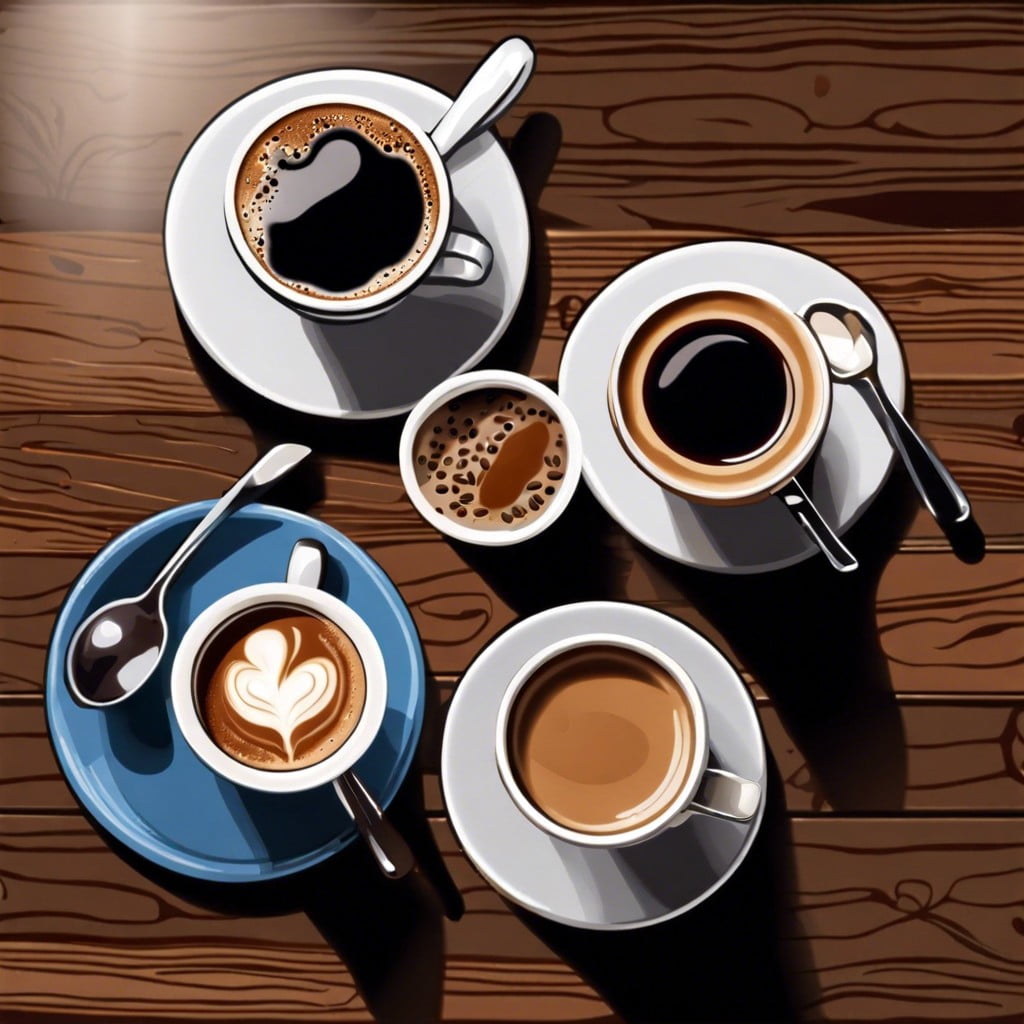Learn the key differences between espresso and coffee, including brewing methods, flavor profiles, and caffeine content.
Espresso Vs. Coffee: Main Differences

Espresso is a concentrated coffee brewed by forcing hot water through finely-ground coffee beans. This method results in a thicker, more potent beverage that’s often enjoyed in small quantities. The presence of crema, a creamy foam on top, is a hallmark of a well-made espresso.
Conversely, regular coffee is typically brewed by dripping hot water over coarser grounds, using methods like the drip brew, French press, or percolators. This process takes longer than making espresso, yielding a lighter, more voluminous drink usually consumed in larger amounts.
While both drinks start from the same beans, the key distinctions lie in the grind size, brewing time, and machine pressure. This affects not just the flavor and texture, but how each is typically served and enjoyed.
Caffeine in Espresso Vs. Coffee
A common myth is that espresso has more caffeine than regular coffee. However, the reality depends on the serving size. Typically, a shot of espresso might feel stronger because of the concentrated nature, but it contains about 63 mg of caffeine. In contrast, a standard 8-ounce cup of coffee averages about 95 mg of caffeine.
This discrepancy arises because espresso is brewed under high pressure, extracting more flavor and chemicals per ounce, while traditional coffee is brewed by percolation or drip, spreading the caffeine over a larger volume.
So, if you’re counting milligrams of caffeine, rather than bursts of energy, a cup of your morning coffee holds more caffeine than a single shot of espresso. However, because espresso is served in smaller quantities, it tastes more powerful, sip for sip.
Roast Level and Grind Size
Darker roasts are typically used for espresso due to their bold, rich flavor which complements the concentrated brewing process. Espresso requires a fine grind to achieve the correct resistance for water being forcefully pushed through, extracting a robust flavor in a short period.
Conversely, coffee can range from light to dark roasts depending on the flavor profile desired. The grind size for coffee varies based on brewing method: coarser grinds suit methods like French press, while medium grinds are ideal for drip coffee makers.
Understanding these aspects can significantly influence the taste and quality of your brew, ensuring you get the best from each bean.
Brew Method and Brew Time
Espresso is crafted using a high-pressure brewing process where hot water is forced through finely-ground coffee. This method extracts intense flavors in about 25 to 30 seconds. The quick, pressurized brewing not only maximizes flavor but also creates a thick, creamy top layer called crema.
On the other side, traditional coffee methods like drip or pour-over involve hot water dripping through coarser grounds, using gravity instead of pressure. This process can take several minutes, depending on the technique, resulting in a lighter and sometimes more nuanced flavor profile.
Understanding these methods helps explain the distinctiveness in taste and texture between espresso and regular coffee, highlighting why espresso often seems stronger and why brewed coffee offers a wider range of flavors over a longer drink.

